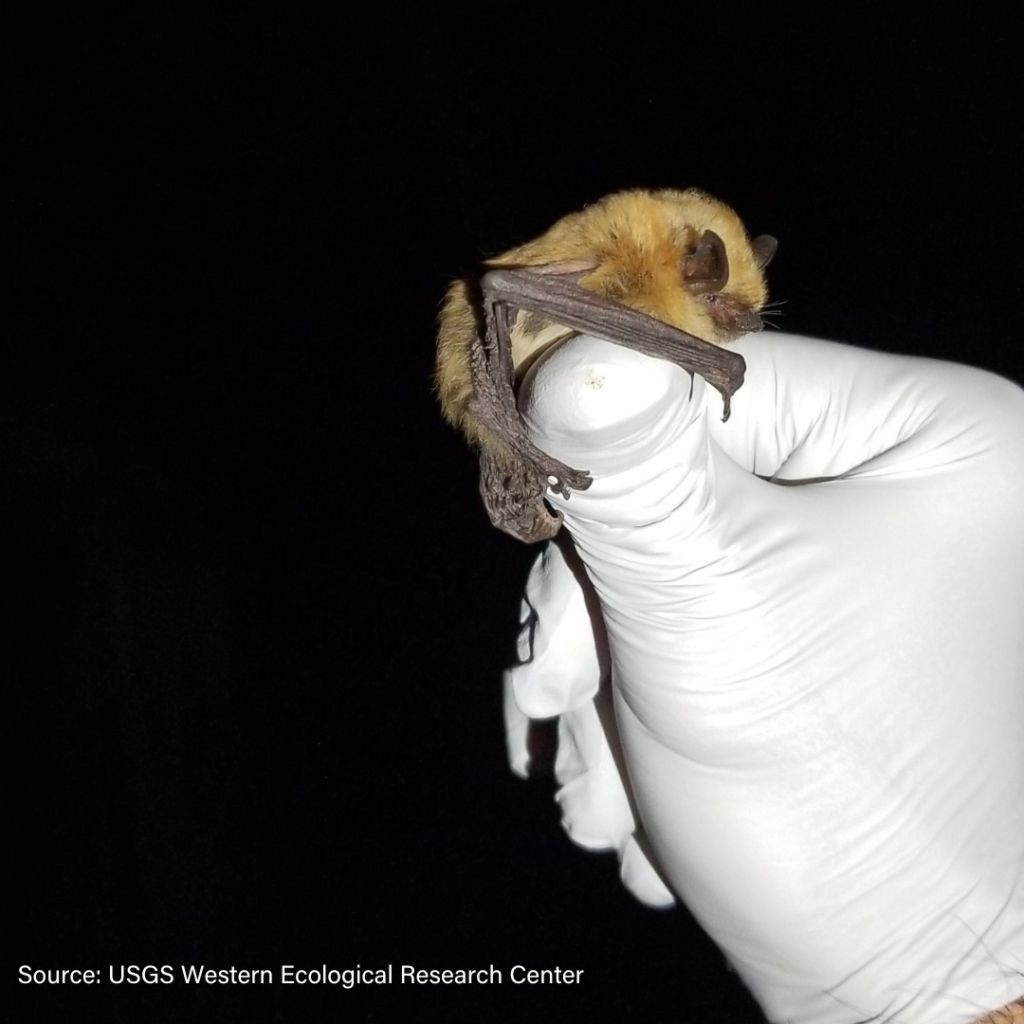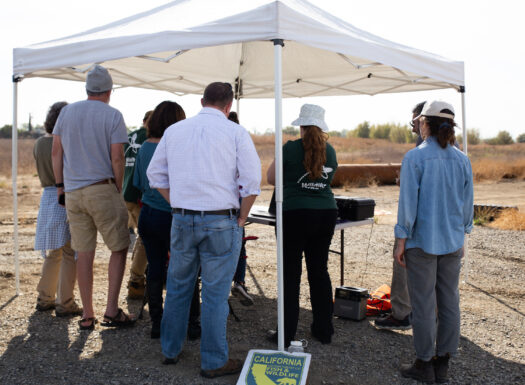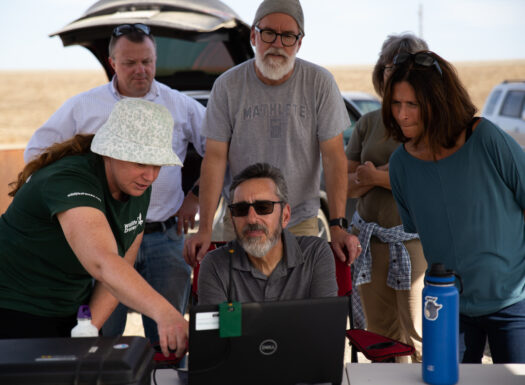Tracking Myotis bats at roosts with the California Dept. of Fish and Wildlife
MONITORING SPECIES
There are 45 bat species across North America, ranging from the Southeastern Myotis to the endangered Indiana bat. A significant number of bats in the United States are currently confronting threats to their survival, being classified as endangered or threatened due to various causes. Primarily, the white-nose syndrome disease poses a major threat, followed by challenges like windmill turbines, habitat loss, and climate change.
The White-nose syndrome (WNS) has had a devastating impact on numerous bat species since its emergence in 2007. The toll has surpassed 6 million bats, spanning a wide range of species, and the syndrome’s reach now extends across the continent.
White-nose syndrome is caused by a white fungus called Pseudogymnoascus destructans and impacts hibernating bats and invades the skin of their muzzles, ears, and wings. Starting from the winter of 2007-2008, this devastating disease has rapidly expanded its presence from the northeastern to central regions of the United States and resulted in the death of millions of bats across more than 40 states and eight Canadian provinces.
Radio-tracking Myotis bats
The California Department of Fish & Wildlife is using Wildlife Drones’ telemetry system to track Myotis bats at roosts. Collaborating on this project are Steve Goldman, GIS Manager at the California Department of Fish and Wildlife, Scott Osborn, Senior Environmental Scientist, and Alice Chung-MacCoubrey, Program Manager at the National Park Service.
Dr Debbie Saunders and her team from Wildlife Drones headed out into the field in Sacramento California to demonstrate our technology to environmental scientists, wildlife researchers, the GIS team, and research students.
The aim of the project is to locate bats in fall and winter. This is no easy task, given the challenges of tracking such small creatures with tiny tags which have a limited lifespan. And not to mention the rugged typography and poorly roaded terrain, which makes it difficult to do the fieldwork.
Track up to 40 radio-tagged bats simultaneously
Tracking micro-bats with radio telemetry has been the go-to method for anyone seeking to understand movements and locate roosting sites of these tiny creatures. However, the effort involved in finding tagged bats using hand-held receivers has always been a costly and daunting task. Radio-tracking remains the only viable solution for tracking such tiny animals that move across large landscapes in unknown ways. Although, due to the limited detection range, many people have traditionally spent hours traipsing across vast (and sometimes inhospitable) terrain whilst holding a radio receiver and yagi antenna aloft for hours on end in the hope of detecting their tagged bats.
In contrast, using Wildlife Drones to track microbats you can cover up to 80 ha in a single flight and gain confidence on where your bats are (or aren’t) across the landscape. Drones are perfect for any terrain and can survey even the most rugged of mountains. Radio-tracking drones are proving to be an efficient and effective solution.



Categories: #EndangeredSpecies

